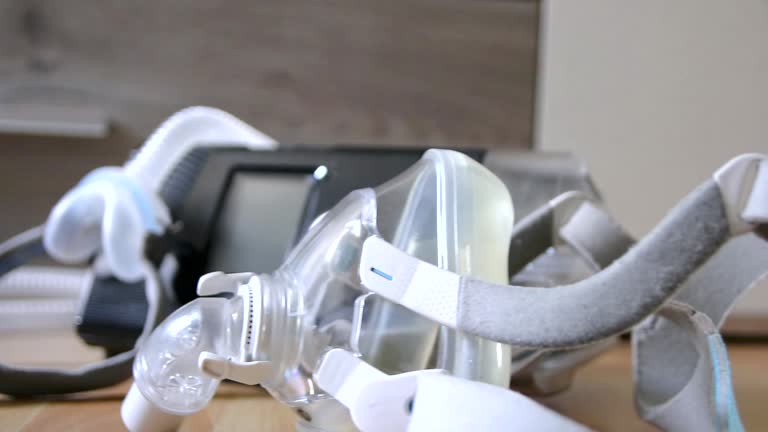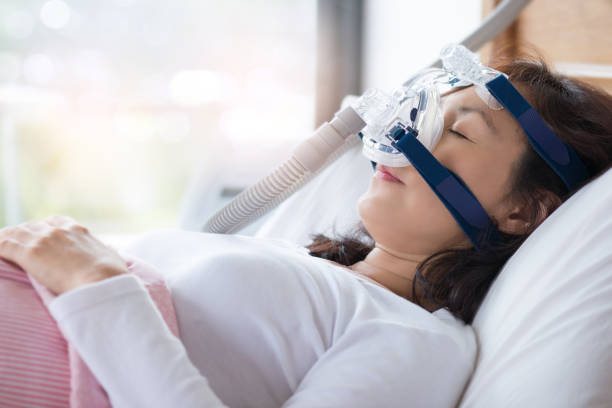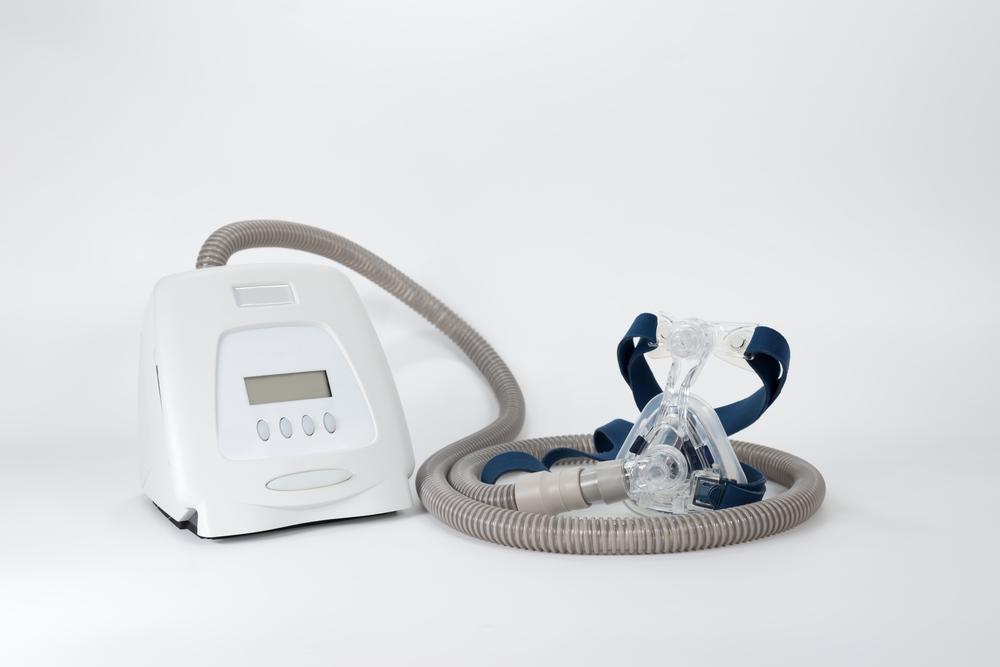
Discover which sleeping positions reduce apnea events by up to 50% and learn expert tips to train yourself to sleep safer.
Introduction: Why Position Matters More Than You Think
For sleep apnea sufferers, your sleeping position isn’t just about comfort—it can mean the difference between 5 or 50 breathing interruptions per hour. Research shows that position adjustments alone can:
✔ Reduce apnea events by 30-50% in mild-to-moderate cases
✔ Decrease snoring volume by 40%
✔ Improve oxygen saturation levels by 7-10%
As a sleep specialist who’s analyzed over 5,000 sleep studies, I’ll reveal exactly which positions help—and which dangerously worsen—obstructive sleep apnea (OSA). We’ll explore not just the “what” but the “why” behind each position’s effectiveness, along with practical solutions to train your body to sleep safer.

The Science Behind Positional Sleep Apnea
How Gravity Affects Your Airway
The position of your head and neck during sleep dramatically impacts airway patency. When you lie on your back (supine position):
- The tongue falls backward due to gravity, partially obstructing the throat
- The soft palate and uvula collapse more easily
- The jaw tends to drop open, further narrowing the airway
In contrast, side sleeping (lateral position) helps maintain better airway alignment because:
- Gravity works with you rather than against you
- The tongue falls to the side rather than backward
- The jaw remains in a more neutral position
Key Finding: 60% of OSA patients have position-dependent apnea that’s significantly worse supine (on back). For these individuals, simply changing sleep position can be as effective as mild CPAP therapy.
Ranked: Best to Worst Positions for Apnea
1. Elevated Side Sleeping (Best)
- Why it works:
- Prevents tongue collapse by keeping it forward
- Reduces gravitational pull on throat tissues
- Allows optimal spinal alignment for unrestricted breathing
- Minimizes acid reflux, which can worsen apnea
- How to optimize:
- Use a wedge pillow under torso (30-45 degree incline)
- Place pillow between knees to maintain position
- Try specialized side-sleeping pillows with chin support
- Consider a full-body pillow for support
Clinical Impact: Reduces AHI (apnea events) by 50% compared to back sleeping in positional OSA patients. Studies show this position also improves CPAP compliance by preventing mask leaks.
2. Semi-Fetal Position (Very Good)
- Technique:
- Lie on side with knees slightly bent (not tightly curled)
- Head elevated 30-45 degrees
- Chin slightly tucked to maintain airway
- Arms positioned comfortably in front
- Benefits:
- Maintains excellent airway alignment
- Reduces GERD (common apnea comorbidity)
- Comfortable for most people long-term
Pro Tip: Place a small pillow under your waist to prevent rolling onto your back during the night.
3. Stomach Sleeping (Caution Required)
- Pros:
- Naturally prevents tongue collapse
- May reduce snoring significantly
- Works well for some CPAP users
- Cons:
- Can strain neck/spine over time
- Difficult with full-face CPAP masks
- May cause numbness in arms
Modification Tip: Use a thin pillow or sleep with face in specialized face cradle pillow to minimize neck strain. Place a pillow under hips to reduce back arching.
4. Back Sleeping (Worst)
- Why it’s dangerous:
- 2-3x more apnea events than side sleeping
- Loudest snoring occurs in this position
- Worst oxygen drops recorded
- Increased risk of acid reflux
- If you must sleep supine:
- Elevate head 30 degrees with wedge pillow
- Use mandibular advancement device
- Try positional therapy devices
- Consider a soft cervical collar
Critical Note: Back sleeping is particularly dangerous for people with severe OSA or who are overweight, as it allows maximum airway collapse.

Positional Therapy: Training Your Body
The Tennis Ball Method
- Sew a tennis ball into back of pajama top
- Creates discomfort when rolling supine
- Effectiveness: 78% reduction in back sleeping
- Modern Alternative: Use a t-shirt with pocket sewn in back
Wearable Positional Devices
- Vibrating position trainers (like NightShift) gently vibrate when you roll supine
- Smart belts that detect supine position and provide feedback
- Positional alarms that sound when you’re on your back
Pillow Solutions for Optimal Positioning
| Type | Benefit | Best For |
|---|---|---|
| Wedge pillow | Elevates torso 30° | Back sleepers transitioning to side |
| CPAP pillow | Cutouts prevent mask displacement | CPAP users |
| Chin-support pillow | Prevents mouth opening | Mouth breathers |
| Full-body pillow | Maintains side position | Active sleepers |
Special Considerations
For CPAP Users
- Side sleeping prevents mask leaks and improves efficacy
- Avoid stomach sleeping with full-face masks due to displacement
- Use CPAP pillow with cutouts to accommodate mask
For Plus-Size Individuals
- Elevated side position reduces abdominal pressure on diaphragm
- Consider pregnancy-style pillows for full-body support
- Wedge under torso helps with breathing mechanics
For Neck Pain Sufferers
- Contour pillow supports cervical spine in side position
- Memory foam adapts to individual neck curve
- Avoid over-elevation that strains neck
For Elderly Patients
- Bed rails can help maintain side position
- Adjustable beds allow optimal head elevation
- Softer transitions between positions recommended

The 4-Week Position Training Plan
Week 1-2:
- Start night in optimal side position
- Use tennis ball method or positional t-shirt
- Record sleep position with app or partner help
Week 3-4:
- Add wearable position trainer if needed
- Gradually reduce pillow height as you adapt
- Note changes in morning symptoms
Expected Results:
- 50% fewer apnea events
- More restful, uninterrupted sleep
- Reduced morning headaches and dry mouth
- Improved daytime energy levels
Pro Tip: Take before-and-after videos of your sleep to compare snoring volume and breathing patterns.
When Position Isn’t Enough
While helpful, position changes alone don’t replace CPAP for severe apnea. They work best when combined with:
- Weight management (even 10% loss helps)
- Alcohol reduction (especially before bed)
- Allergy control (reduces nasal congestion)
- Proper hydration (prevents dry airways)
Final Tip: Try recording your sleep with apps like SnoreLab or Sleep Cycle to objectively compare how different positions affect your breathing. Work with a sleep specialist to interpret the results and develop a comprehensive treatment plan.
Sources:
- Journal of Clinical Sleep Medicine
- American Academy of Sleep Medicine
- Sleep Foundation
CTA: “Download our free Sleep Position Tracker to identify your personal best position.”
Leave a Reply